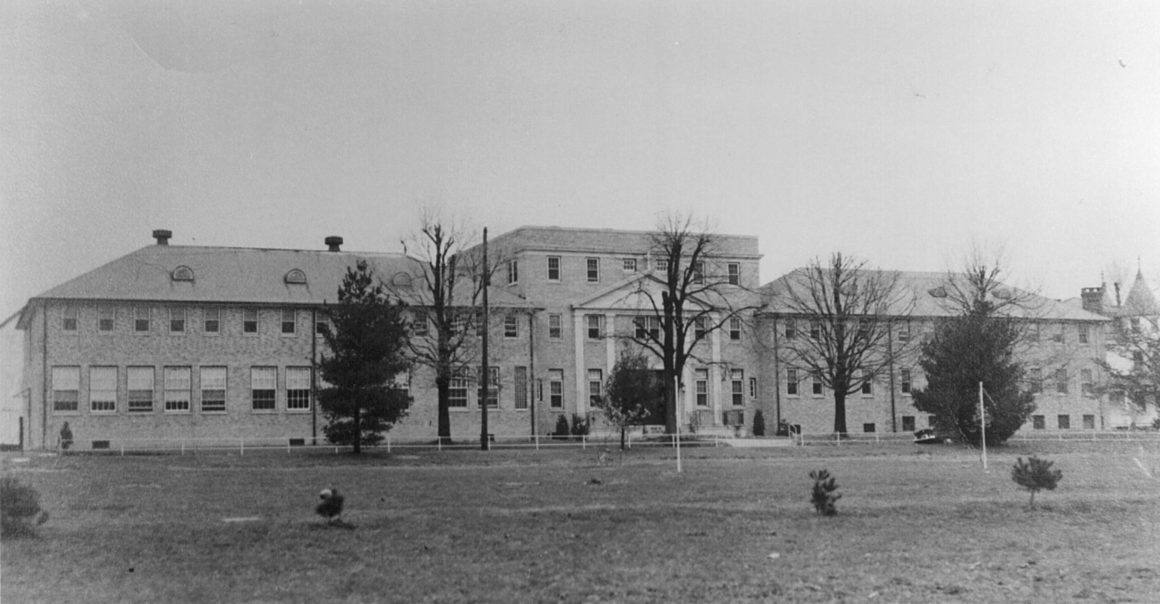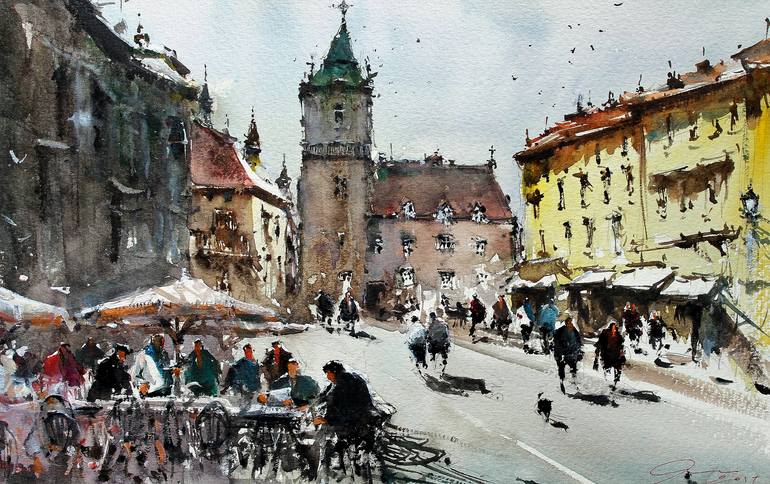The Home often careened into a panic-stricken, twelfth-century German village. Sister Superintendent Alfreda believed that all dogs were rabid and vicious, hence dog and “wolf” sightings were especial cause for pitchforks and torches, or so it seemed. Sisters Petra and Hademunda would herd us into a barn for a round of Hail Marys. Mr. Paul, the Home’s handyman, would be ordered into the fields with a broom whistling and jabbing at the shrubbery. At his All clear!, we’d burst the doors looking for Evil, scatter in search of bloody paw prints in the playground dust. Soon someone would spot a quartz pebble and claim it a wolf’s tooth, which would start another crazed stampede to stare and wonder at The Mystery. The Home was awash in mysteries and miracles, and whether a bright stone or a magic tooth, any one of us would have saved it to make a wish. For ice cream. A kite on a string. Either one nothing more than a dream for us inmates at the Sacred Heart Home and School for Friendless, Crippled, and Convalescent Children—where the only true miracle might be a Hershey Kiss someone got from a Sunday visitor and then tucked under a pillow as contraband.
That the Home had been founded on the flesh and bones of farm animals seems to have been erased from collective memory. Or perhaps deliberately repressed since the Home’s mission was not meat but souls, to “conquer the world for Christ.” For humans. Not for dogs or cows. Nor for the carp and bullfrogs that spawned in the Home’s fetid pond.
Sacred Heart’s acreage was formerly a cattle breeding farm in the dairylands of eastern Pennsylvania. In the early twentieth century, Colonel Tilghman S. Cooper’s “Linden Grove” imported stock from as far as the Isle of Jersey, and his buyers represented gentleman farmers as renowned as the Vanderbilts and Rockefellers. Coopersburg, in Lehigh County, was a duly noted trolley stop on the Liberty Bell Line that connected Philadelphia to Allentown. Regional hotels offered shuttles to and from Linden Grove during the Colonel’s famous annual Memorial Day Cattle Sales. By the late twenties, however, Colonel Cooper had decided to close the failing cow business and, upon his death, get into the business of Catholicism. His will stated that the twenty-four acres of pasture and barns were to be sold at a fire-sale price to the Allentown Diocese, which then granted authority to the Congregation of the Missionary Sisters of the Most Sacred Heart of Jesus to establish a home for war orphans. The order Missionarii Sacratissimi Cordis (MSC), founded in Germany in 1899 “specifically for duty in pagan lands,” had adopted the motto “May the Sacred Heart of Jesus be Loved Everywhere.” The pagan lands were the Marshall Islands, Liber, Tonga, Northern Ireland, the Leper Colony of Analaua, and the farm and coal fields of eastern Pennsylvania.
Animal husbandry, then, took a curious conversion at Sacred Heart. Here family meant our community of one priest, a dozen nuns, and in 1957, over a hundred boys and girls, all working-class white Euro-centric and under age fifteen. Supreme authority rested with Sister Superintendent while Father Emerich was head of all things theological. Or so we thought. On Saturdays his role was to hear our fake sins and hand out real Hail Marys, so at Sunday Mass he could press upon our purified tongues, wafers that would have tasted better made from library paste. What he did the rest of the week was Mystery. And that, we were told, came from God.
When, in 1950, dormitories replaced cattle stalls, in-house policing replaced cattle fencing. By day we were policed on the playground, in the recreation room, in the classrooms, and in the dining room which an hour before had been our playroom. During mass on Wednesdays and Sundays, rosary patrols walked the aisles and pews. At bedtime the House Mother stationed herself in the lavatories to ensure orderliness and hygiene. There was also, in the Small Boys’ Dorm, a House Mother’s night-watch: a Dick Tracy style one-way surveillance mirror—Sister Itwara’s “secret window”—that looked out from her quarters into the dorm. If she suspected some mischief was afoot, she’d rap a warning on the glass with her thick “wed-to-Jesus” matrimonial ring.
Privacy was rare because our lives, in the confines of the Home, were so public. Privacy was also risky since we lived en masse. Deviation was suspect, whether in thought, action, lingual accent, or color of skin. Still, many of us hadn’t experienced any other way of living. This was life. Our life. It’s what we knew. For some, depending on the circumstances of their previous life, it’s what they hated. For others, what we loved. By ‘57, Sacred Heart had been my home for six years, having been “dropped off” at age two for reasons I wouldn’t learn for years yet to come. Emerich and the nuns, as far as I knew, were the only adults I had ever known. The bad food, the playground bullies, the relentless indoctrination, all this comprised the unchallenged totality of my world.
Life at the Home was built on rules and rumors, sometimes contrived to enforce certain individual or mass behaviors. Mostly they were to keep us out of things or places, or to keep us in places or things, especially if it concerned our bodily and spiritual purity. All of us “knew” that Father Emerich’s cellar was crawling with rats and spiders; that he kept a pot of boiling water for hands that stole or tongues that told lies. That the devil snuck under your bed at night and filled your shoes with sin. If you skipped your bedtime prayers, while you slept bats would nest in your hair.
Thwarting deviation also meant restricting our contact with the secular world. Other than Dick and Jane readers and Sunday missals and catechisms, books such as Nancy Drews, Hardy Boys, Life and Look magazines, radios and newspapers were, if not officially banned, then considered contraband and confiscated by the nuns. Television, astoundingly and ostensibly for our entertainment, came later. A single beige box suspended from the ceiling on chains with its three Philadelphia channels under Alfreda’s watchful, censoring eye. Naturally, our viewing fare was limited to the moral lessons of Superman, Lassie, and Rin Tin Tin. The latter, pitting sword-wielding bluecoats against Native Americans, was in keeping with the MSC’s original mission “to conquer the world for Christ,” achieved through the “sublime vocation” of converting “cannibal kings, head hunters,” and other “ardent believers in spiritism” to loyal Catholics and thence into good citizens.
Superintendent Alfreda also sought opportunities to present lessons in theology apart from Father McGuire’s Baltimore Catechism, a flimsy green paperback which, while instructive, was deathly boring except for the most devout. Some of Alfreda’s alternative pedagogical ideas succeeded as planned. Some, though, went in other directions.
One blazing August afternoon the youngest of us, roughly thirty from age four to seven, were squeezed into the playroom. Mr. Paul walked in with a step-ladder balanced on his shoulder. Over a window he taped a bed sheet. Sister Bonita wheeled a machine that looked to have two large mouse ears on top. After Mr. Paul threaded the film, at his nod of confidence Sisters Ernelda and Bonita pulled down the shades, turned off the lights and ordered us to silence. When nothing happened, Mr. Paul gripped a small flashlight in his teeth and fiddled with the machine. In the darkness we trained our eyes on the flashlight. Followed its jumping yellow beam which now and then showed his face lit with rivulets of sweat. Soon the air thickened with humidity as he seemed as unfamiliar with a projector as we were with Hollywood, since probably only a few of us had ever seen a movie. We began squirming in our chairs as one massive body with an irritating case of summer itch. Summer was for outdoor playtime, not sitting in a blacked-out room rank with the odor of boiled cabbage. As our temperatures rose, so did our voices, until we sounded like honeybees in an overheated hive.
At last a blast of light and sound sent us reeling back in our chairs. Mr. Paul jostled the machine to center the image. A loud whack stopped the machine’s jiggering. Then we sat stupefied watching a film about three shepherd kids who saw the Virgin Mary float down from the sky and land on a hill. The flickering seemed to cast a spell. Its music was hypnotic and some of us began to think that the clouds and the sheep and three raggedy kids were all real. Three little kids who looked like us, wore thrift-shop hand-me-downs like us, folded their hands and prayed on their knees like us.
Something then broke the spell. The sky went dark in the film, and something about the scene tricked our imaginations into thinking that hell was falling from heaven. Flames would burn us alive and we were trapped in the dark. Sobs were heard. A scream from the back of the room suddenly sent us into a panic. The nuns rushed into action rolling up the shades and pushing us into the bright outside air, telling us to breathe deeply, rhythmically, first through our noses and then through our mouths. Hademunda expanded her chest and pointed up and said, Look. It’s blue. We lifted our chins in unison as if following a man on a trapeze. An uneasy quiet settled over us and the nuns looked relieved. Alfreda clapped her hands to silence us to order, but as we started for the door someone yelled, It’s falling! The sun is falling! In a clamor of sobs and screams we ran for water, for the fish-pond fed by a creek at the far edge of the playground. Alfreda and the nuns raced ahead trying to stop us. Some of us tripped and got stepped on. Cries were heard. Surely some of us could really feel the sun hurling towards the backs of our necks.
We crashed into the nuns who had beaten us to the water’s edge. A shout went up: Look! Look!, and whether it was the pluming contrails of a jet or the wisp of a dark cloud, it could only mean that fire was imminent. We pried off our Buster Browns and black-and-white saddles and tossed them into the cattails. Whole families of frogs leapt from the banks and began kick-swimming to safety. We mimicked hop-frogging into the water fully clothed. A splash battle started between the boys and the girls. Others dove deeply and brought up treasures of whorled snails. The nuns held their habits ankle-high and retreated with their workshoes mucking in the slime. High on the bank one of them pointed excitedly to where the sun had just faded behind a cloud. We lobbed soft balls of green mud aimlessly into the air and ignored The Sign. Small clans of us gathered and marveled at the tiny array of living things scooped in the cups of our hands—the half-fish half-frog of a tadpole, minnows no bigger than a pin. By now we were unimpressed by the movement of the heavens. We had entered the real world of make-believe, a place where we could wiggle our fins and flop our tails. Hademunda resigned herself to our oblivion. After all, no one got burned to a crisp. No one had yet drowned and all of us had slipped in the mud. Perhaps for this they allowed us to wear crowns of duckweed, allowed us to enjoy squirting the green fishy-smelling water from our ballooned cheeks in to the happy air.
Evening came and the celluloid terror of “Our Lady of Fatima” faded to memory. At our bed-sides we prayed for the Prince of Peace, thanked Our Blessed Virgin Mother, then folded and draped our clothes over the bedrails, assured that heaven was up and that our guardian angels would protect us from whatever lurked below. We stuffed our shoes with the balls of our socks to keep out the devil. Then slept as swaddled babes, imagining our dorm as one big rocking cradle under the stars. In our light summer cottons we dreamed of fish and frogs, serenely unaware that the price of childhood pleasure—a water-borne gastric revolution—would hit us just before dawn.

Notes:
History of Linden Grove, from Coopersburg Historical Society.
Cooper’s will is discussed in an undated article in an un-named newspaper. It also reports that he was a “lover of little boys and girls.” Article in possession of the author.
“[D]uty in pagan lands” and other MSC related quotes are from the diocesan publication The Georgia Bulletin, June 4, 1964. In 1950-1951, because of fire hazards, most of the cattle stalls and barns were demolished and replaced with a two-storey brick edifice housing a church, dormitories, kitchen, and a school, K-8. The last barn was demolished in 1956-1957.
Children approaching age fifteen, if not placed in foster homes, were sent to Philadelphia’s St. Margaret’s Industrial School for Girls or Edington Industrial School for Boys.
Philadelphia’s three television stations were WRCV, NBC Channel 3; WFIL, ABC Channel 6; WCAU, CBS Channel 10.
Michael A. McGuire, Father McGuire’s The New Baltimore Catechism and Mass, No. 2, Official Revised Edition. Green paperback. (Benziger Brothers: New York, 1953).
“Our Lady of Fatima.” John Brahm, director. 1952.
Photograph: Sacred Heart Home and School for Friendless, Crippled, and Convalescent Children. Coopersburg, Pa. c.1950-51. © Missionarii Sacratissimi Cordis. Used by permission.





